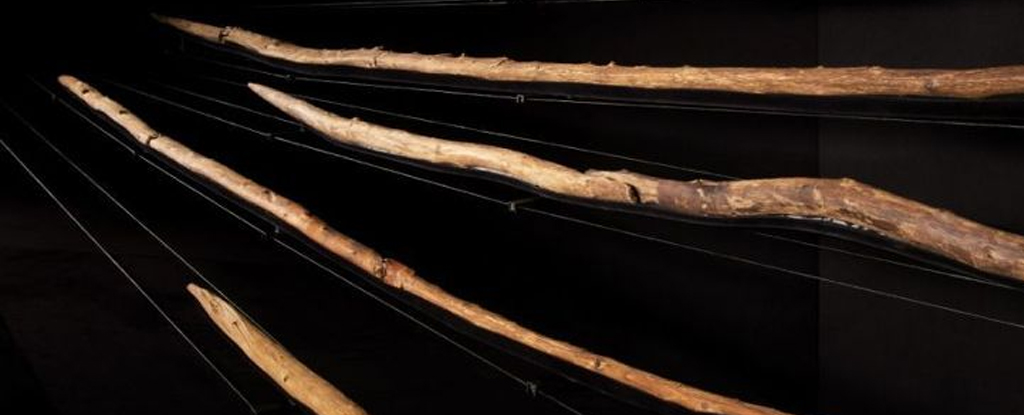Une nouvelle étude révèle que les structures cristallines, qui sont cruciales pour la science des matériaux et les technologies telles que les semi-conducteurs et les panneaux solaires, ne sont pas toujours nécessairement disposées de manière ordonnée. Ils ont découvert que l’empilement aléatoire de couches hexagonales (RHCP), auparavant considéré comme un état de transition, est susceptible d’être stable et peut fournir de nouvelles propriétés utiles dans les matériaux multi-espèces tels que le carbure de silicium utilisé dans l’électronique haute tension et les gilets pare-balles.
Les croyances antérieures ont été renversées par la découverte de structures irrégulièrement disposées.
Pour beaucoup, le mot « cristaux » évoque des images de lumière du soleil brillante créant des prismes de couleurs arc-en-ciel ou des pierres translucides censées avoir des pouvoirs de guérison. Mais en science et en ingénierie, les cristaux prennent une définition plus technique. Ils sont vus comme des substances dont les composants – qu’il s’agisse d’atomes, de molécules ou de nanoparticules – sont disposés régulièrement dans l’espace. En d’autres termes, les cristaux sont identifiés par la disposition régulière de leurs composants. Des exemples familiers incluent les diamants, le sel de table et les morceaux de sucre.

Sang Woo Lee. Crédit : Institut polytechnique Rensselaer
Contrairement à cette définition largement acceptée, une étude récente menée par Sangwoo Lee, professeur adjoint au département de génie chimique et biologique du Rensselaer Polytechnic Institute, révèle un aspect intéressant des structures cristallines, révélant que l’arrangement des composants au sein des cristaux ne l’est pas. Toujours forcément régulier.
Cette découverte fait progresser le domaine de la science des matériaux et a des implications non réalisées pour les matériaux qui y sont utilisés[{ » attribute= » »>semiconductors, solar panels, and electric vehicle technologies.
One of the most common and important classes of crystal structures is the close-packed structures of regular spheres constructed by stacking layers of spheres in a honeycomb arrangement. There are many ways to stack the layers to construct close-packed structures, and how nature selects specific stacking is an important question in materials and physics research. In the close-packing construction, there is a very unusual structure with irregularly spaced constituents known as the random stacking of two-dimensional hexagonal layers (RHCP). This structure was first observed from cobalt metal in 1942, but it has been regarded as a transitional and energetically unpreferred state.
Lee’s research group collected X-ray scattering data from soft model nanoparticles made of polymers and realized that the scattering data contains important results about RHCP but is very complicated. Then, Patrick Underhill, professor in Rensselaer’s Department of Chemical and Biological Engineering, enabled the analysis of the scattering data using the supercomputer system, Artificial Intelligence Multiprocessing Optimized System (AiMOS), at the Center for Computational Innovations.
“What we found is that the RHCP structure is, very likely, a stable structure, and this is the reason that RHCP has been widely observed in many materials and naturally occurring crystal systems,” said Lee. “This finding challenges the classical definition of crystals.”
The study provides insights into the phenomenon known as polytypism, which enables the formation of RHCP and other close-packed structures. A representative material with polytypism is silicon carbide, widely used for high-voltage electronics in electric vehicles and as hard materials for body armor. Lee’s team’s findings indicate that those polytypic materials may have continuous structural transitions, including the non-classical random arrangements with new useful properties.
“The problem of how soft particles pack seems straightforward, but even the most basic questions are challenging to answer,” said Kevin Dorfman of the University of Minnesota-Twin Cities, who is unaffiliated with this research. “This paper provides compelling evidence for a continuous transition between face-centered cubic (FCC) and hexagonal close-packed (HCP) lattices, which implies a stable random hexagonal close-packed phase between them and, thus, makes an important breakthrough in materials science.”
“I am particularly pleased with this discovery, which shows the power of advanced computation to make an important breakthrough in materials science by decoding the molecular level structures in soft materials,” said Shekhar Garde, dean of Rensselaer’s School of Engineering. “Lee and Underhill’s work at Rensselaer also promises to open up opportunities for many technological applications for these new materials.”
Reference: “Continuous transition of colloidal crystals through stable random orders” by Juhong Ahn, Liwen Chen, Patrick T. Underhill, Guillaume Freychet, Mikhail Zhernenkovc and Sangwoo Lee, 14 April 2023, Soft Matter.
DOI: 10.1039/D3SM00199G
Lee and Underhill were joined in research by Rensselaer’s Juhong Ahn, Liwen Chen of the University of Shanghai for Science and Technology, and Guillaume Freychet and Mikhail Zhernenkov of Brookhaven National Laboratory.

« Évangéliste généraliste de la bière. Pionnier du café depuis toujours. Défenseur certifié de Twitter. Internetaholic. Praticien du voyage. »



/cdn.vox-cdn.com/uploads/chorus_asset/file/25450390/videoframe_33450.png)



More Stories
Étude : Les anciens humains fabriquaient des armes mortelles en bois il y a 300 000 ans
La grippe aviaire est arrivée dans la Big Apple
« Sans précédent » : le dioxyde de carbone augmente à un rythme dix fois plus rapide qu’à aucun autre moment de l’histoire.